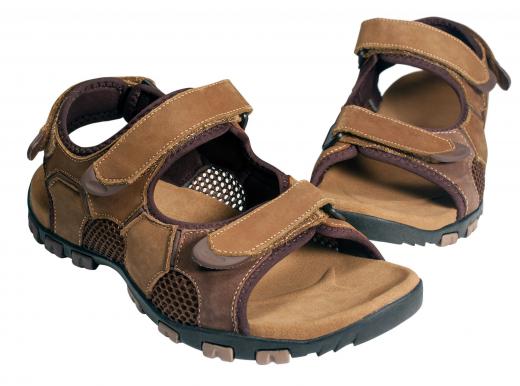Various types of shoes are made in a shoe factory, either by machines or by human hands. The process of making shoes involves several steps, and one of the most important steps is the development of the shoe's soles. Rubber is a commonly used material, which means rubber manufacturing is done within the shoe factory. Once the sole is made, it must be secured to the shoe's uppers, which can be made from a wide variety of materials, including leather, suede, nylon, vinyl, cotton, and much more. Sometimes machines are responsible for stitching the two parts of the shoes together, while in other cases, a human worker will need to do the sewing.
A shoe factory is likely to feature an assembly line set-up, in which each employee has a specific task to complete before passing the shoes onto the next worker. An employee or employees may be responsible, for example, for making the soles, then passing them onto another worker who might prepare the soles for sewing or gluing to other parts of the shoe. The next employee in the shoe factory assembly line may be responsible for sewing the uppers together in preparation for gluing or sewing to the soles. Another employee will then be responsible for inserting insoles and laces, then inspecting the finished product.

Once the shoes are made, they will be passed along to other workers in the shoe factory responsible for packaging. The packaging itself may be created onsite, though many factories outsource this work to a packaging specialist who can design appropriate boxes for containing the shoes for sale. The boxes will generally feature the factory's business logo and other important information regarding sizes, designs, and materials. The boxes may need to be assembled by workers in the shoe factory before the shoes can be placed inside and protected with paper or plastic.

The shoes must then be loaded onto pallets that can be moved into trucks in preparation for transport to various shoe distributors or retail establishments. Some employees within the shoe factory are exclusively responsible for fulfilling orders and tracking where each pair of shoes goes. This helps with billing, as well as tracking production quotas.

Throughout the process of making shoes, quality control specialists are likely to be present to ensure the products being created are of the highest quality standards. If problems arise, the quality control specialist may make recommendations for improving production processes or fixing a particular problem within the system.
